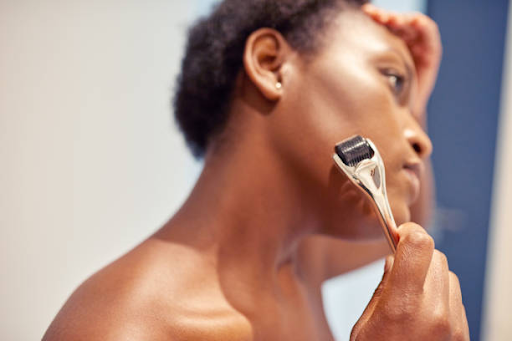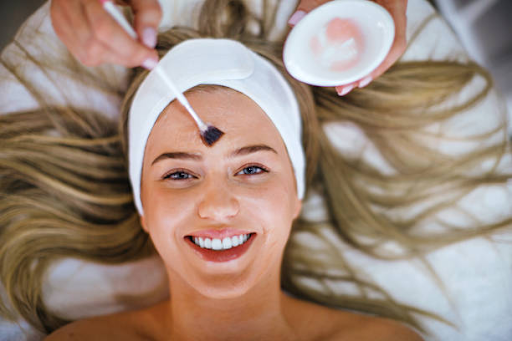As we delve into the realm of skin rejuvenation, two procedures often stand out for their effectiveness: chemical peels and microneedling. Both have their unique set of benefits and are touted for their ability to deliver smoother, younger-looking skin. But should these treatments be alternated, and if so, what are the potential advantages or drawbacks? This article seeks to unravel the answer to this pressing question and guide you through making an informed decision on tailoring these treatments to your skin’s needs.
Understanding Chemical Peels and Microneedling
Chemical peels refer to skincare treatments where a chemical solution is applied to the skin to remove dead cells and stimulate the growth of new ones. They come in various strengths: light, medium, and deep. Light peels offer gentle exfoliation, while medium and deep peels provide more intensive resurfacing. The benefits of chemical peels include improved texture and tone, reduction of fine lines, and diminished hyperpigmentation. However, they also come with potential risks such as redness, peeling, and the need for downtime depending on their intensity.

Microneedling Unveiled
Microneedling, also known as collagen induction therapy, involves the use of fine needles to create micro-injuries in the skin, prompting the body’s natural healing process and collagen production. This treatment can reduce the appearance of scars, wrinkles, and large pores. Microneedling’s advantages include its ability to enhance product absorption and minimal downtime compared to deeper peels. Possible side effects might include minor redness and irritation, though serious complications are rare when performed by a professional.
The Case for Alternating Treatments
When considering combining chemical peels with microneedling, the rationale lies in their synergistic effects. Chemical peels excel at addressing superficial skin issues, while microneedling targets deeper layers of the skin. This combination allows a comprehensive approach to skin rejuvenation, tackling a variety of concerns from multiple angles. For instance, a chemical peel might enhance the brightness of the skin, while subsequent microneedling treatments work to restore firmness and elasticity.
Scheduling Treatments for Maximum Efficacy
Determining the ideal frequency for alternating chemical peels and microneedling requires a balance that respects the skin’s healing process. Here are some factors to consider when scheduling these treatments:
- The strength and type of chemical peel conducted.
- The depth of microneedling performed and individual healing rates.
- The skin’s overall condition and response to each treatment.
Typically, a wait of 2-4 weeks is advisable between the treatments to ensure full recovery and optimal results.
Tailoring Treatments to Skin Needs
Not every skin type or condition is apt for alternating chemical peels with microneedling. The best candidates are those without active skin diseases, severe acne, or excessively sensitive skin. It’s important to undergo a professional assessment to determine whether these treatments, alone or in combination, are suitable options for achieving your skin care goals.
To derive the most benefit from alternating chemical peels and microneedling, customization is key. Here’s a basic table outlining various treatments options tailored to different skin conditions:
| Condition | Chemical Peel Recommended | Microneedling Depth |
|---|---|---|
| Mild Aging Signs | Light Peel | Shallow Depth |
| Acne Scars | Medium Peel | Medium Depth |
| Hyperpigmentation | Medium to Deep Peel | Varies |
| Severe Wrinkles | Deep Peel | Deep Depth |
The preference for chemical peel strength and microneedling depth can differ, thus a skin professional’s insight is invaluable.
Safeguards and Best Practices
When embarking on a regimen of alternating chemical peels and microneedling, it’s crucial to heed precautions. Those with active infections, chronic skin conditions or certain types of scars may need to forego these treatments. Moreover, following a specialist’s advice regarding suitability, risks and post-procedure care is of utmost importance to ensure safety and efficacy.
Post-Treatment Care
This numbered list provides essential post-treatment care tips:
- Avoid sun exposure and always use a broad-spectrum SPF.
- Keep the skin well-moisturized with gentle products.
- Steer clear of makeup and strenuous activities for at least 24 hours.
By adhering to these guidelines, you can help your skin recover quickly and unveil its optimal condition following treatment.

Conclusion
Alternating chemical peels and microneedling can be a game-changer for those looking to achieve comprehensive skin rejuvenation. This approach allows for a targeted strategy that deals with a spectrum of skin concerns. Striking the right balance between the treatments and allowing sufficient healing time are crucial steps for success. With the appropriate precautions and a personalized treatment plan guided by a skincare professional, you may unlock the full potential of your skin’s health and beauty. Before proceeding, consider the professional advice discussed here to ensure that these treatments support your skin care aspirations.
FAQs
Q1: How long should I wait between a chemical peel and microneedling?
A1: The waiting period can vary depending on the intensity of the chemical peel and the sensitivity of your skin, but typically, it’s recommended to wait at least 2-4 weeks between treatments.
Q2: Can alternating chemical peels and microneedling cause increased skin sensitivity?
A2: Yes, both treatments exfoliate or puncture the skin which can temporarily increase sensitivity. It’s essential to give the skin ample time to heal and follow the advice of a skincare professional.
Q3: Are there skin types that should avoid alternating these treatments?
A3: Individuals with very sensitive skin, active acne, or certain skin conditions may be advised to avoid alternating these treatments. It’s important to get assessed by a professional.
Q4: What should I include in my skincare routine after alternating treatments?
A4: A gentle, non-irritating skincare routine that includes hydration, sunscreen, and possibly reparative serums is recommended. Avoid harsh scrubs or active ingredients until the skin is fully healed.
Q5: Will alternating chemical peels and microneedling work for reducing acne scars?
A5: Many individuals see improvements in the appearance of acne scars with this combination, as both treatments can stimulate collagen production and skin renewal. However, results can vary, and consultation with a professional is advisable.
